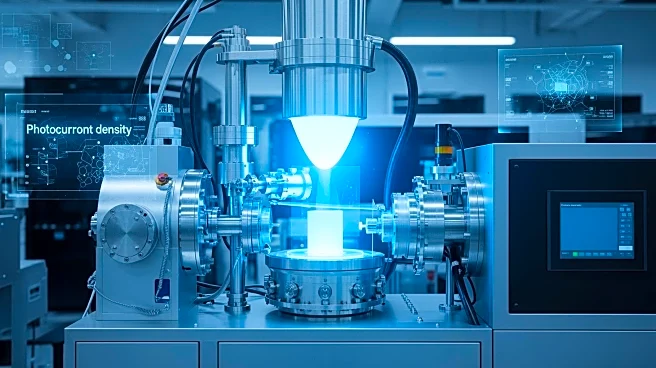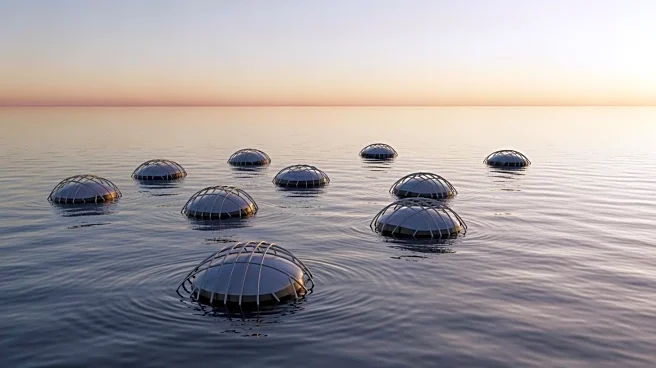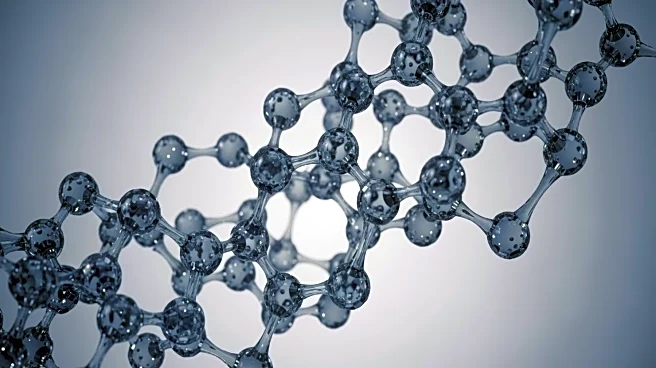What's Happening?
OCI Tokuyama Semiconductor Materials Sdn. Bhd. (OTSM) has made significant strides in the synthesis of titanium nitride (TiN) films using a hydrothermal-galvanic couple method combined with reductive annealing.
This process has shown a remarkable improvement in photocurrent density, particularly when annealed at 900°C in a nitrogen/hydrogen (N2/H2) atmosphere. The study involved the synthesis of SrTiO3/TiN films, which were then subjected to various annealing conditions. The results indicated that annealing in N2/H2 led to a substantial increase in photocurrent density, reaching levels as high as 7.2 mA/cm2. This improvement is attributed to the formation of a SrTiO3/TiO2/TiN heterostructure, which enhances the photoelectrochemical performance of the films.
Why It's Important?
The advancements in TiN film synthesis by OTSM have significant implications for the semiconductor industry, particularly in enhancing the efficiency of photoelectrochemical devices. The improved photocurrent density suggests potential applications in solar energy conversion and other technologies requiring efficient light absorption and electron transport. The ability to control the formation of heterostructures through specific annealing conditions could lead to more efficient and cost-effective production methods for high-performance semiconductor materials. This development could benefit industries focused on renewable energy and electronic devices, providing a competitive edge in the market.
What's Next?
Future research may focus on optimizing the annealing process to further enhance the photocurrent density and stability of the films. There is potential for exploring different atmospheric conditions and temperatures to refine the synthesis process. Additionally, the application of these findings in commercial semiconductor manufacturing could be explored, potentially leading to collaborations with other industry players. The long-term stability of the films under continuous illumination and their performance in real-world applications will be critical areas for further investigation.
Beyond the Headlines
The study highlights the importance of understanding the microstructural changes in semiconductor materials and their impact on performance. The introduction of oxygen vacancies and the formation of heterostructures are key factors in enhancing photocurrent density. This research underscores the potential for innovative synthesis methods to drive advancements in semiconductor technology, with broader implications for energy efficiency and sustainability.











